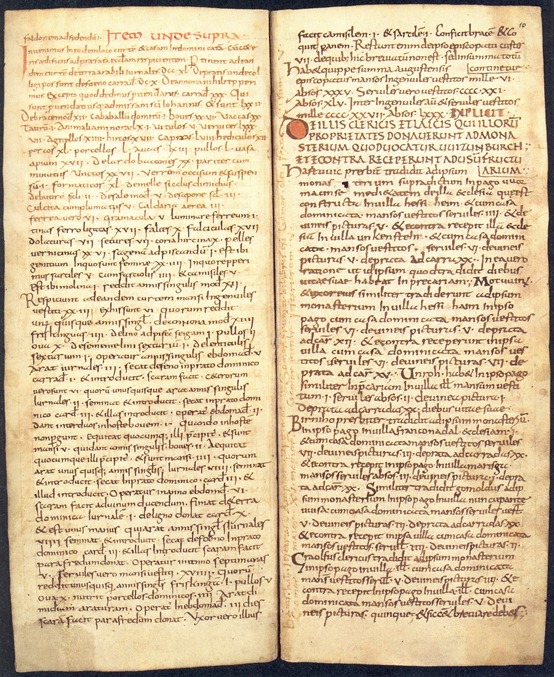It was already there …
The research project (B-1-3) Infrastructure of the late antiquity as early medieval governance resource led by Stefan Esders deals with the conversion of Roman infrastructure and its integration into a new political, military and ecclesiastical functional context.
 The focus is on the appropriation of Roman infrastructure (roads and castles) and munera publica (drudgery or payment in kind, requisitioned service) by post-Roman rulers. Esders’ investigation focuses on Topoi’s Key Topics “Transformation” and “Economy”. After the decline of Roman military power in the northern Alpine region beginning in the early 5th century, new local rulers took over buildings and other sites which were left behind. Particular attention will be given to source material coming from the areas around Salzburg (Austria), Regensburg and Augsburg (Germany), as well as from the Middle Rhine region, but the objective is to write a monograph on the region around Lake Staffelsee (Bavaria).
The focus is on the appropriation of Roman infrastructure (roads and castles) and munera publica (drudgery or payment in kind, requisitioned service) by post-Roman rulers. Esders’ investigation focuses on Topoi’s Key Topics “Transformation” and “Economy”. After the decline of Roman military power in the northern Alpine region beginning in the early 5th century, new local rulers took over buildings and other sites which were left behind. Particular attention will be given to source material coming from the areas around Salzburg (Austria), Regensburg and Augsburg (Germany), as well as from the Middle Rhine region, but the objective is to write a monograph on the region around Lake Staffelsee (Bavaria).
Not only buildings and roads were reused by the post-Roman rulers, but also fiscal structures that had been established by the late Roman state. The execution of important tasks had been regulated by enlisting its citizens for drudgery or payment in kind. These munera publica involved work and handcraft contributions, the production and delivery of goods, quartering and the provision of animals for transport services. Many of these efforts were directly related to the needs of the army and thus connected with infrastructure (fiscal estates, roads, waterways). Using the example of the northern Alpine region Esders will investigate how such structures were integrated as substructures in new political, military and ecclesiastical functional contexts. Literacy, resource management and governance are the keywords that will allow us to form a clearer conception of the effects and the transformation of Roman substructures.
In comparison to Germany, Esders will also take a closer look on public transport and public roads in Visigothic Spain. Late antique infrastructures such as roads and castles were fundamental to the politico-military, ecclesiastical and economic organization of the so-called “Germanic” empires that succeeded the Roman Empire. On the basis of the so-called Leges Barbarorum, the research group will investigate the continuation and reuse of road systems in Spain and Septimania. Legal texts from southwestern Gaul (Codex Euricianus) and from Spain (Leges Visigothorum) will be compared with late Roman decrees from the Theodosian and Justinianic Law Codes and be supplemented by an evaluation of archeological material from southwestern Gaul and Spain from the late Roman and early medieval periods.
A significant change in function is the transformation of late Roman fortifications into early medieval monasteries. It is based on their convenient location with facilities as well as fiscal possession. Furthermore, monastic spatial development required integration in the road networks connecting Roman fortifications. Such reuse of fortifications will be investigated by means of a supra-regional approach, comparing selected monastic foundations on the basis of relevant written sources (examples for locations, name of literary sources) and archeological evidence. In order to trace the transition from secular to monastic “militia” also the transmission of some relevant ancient texts will be studied.
RELATED LINKS
Events:
Research project:
Publication:
Dissertations:
Law and Border Policy in the Late Roman Cyrenaica
Read more articles in TOPOI FEATURE
CREDITS
Image above: Page from the Staffelsee inventory (fol. 9r-10r), in: Helmstedter manuscripts, Codex Guelferbytanus 254, 9th century AD, Wolfenbüttel | Source: HAB Wolfenbüttel: http://diglib.hab.de/mss/254-helmst/start.htm?image=000013 | CC BY-SA 3.0 DE
